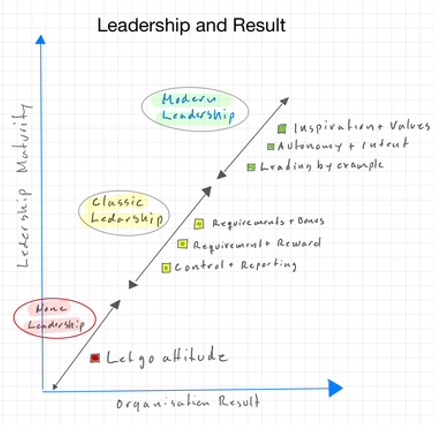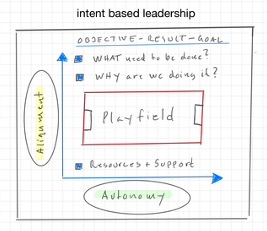The human leader
Leadership is a critical factor in driving success and achieving results, regardless of the type of organization. At its core, effective leadership is rooted in the leader’s personal maturity and their commitment to continuous learning and development. A successful leader inspires and empowers their team, fostering a positive work environment where individuals feel safe, valued, and motivated to collaborate and innovate.
Outlined below are key aspects of leadership and management insights essential for thriving in a modern organization.
Leadership change over time
Anyone who has held a leadership role has likely been asked what they might have done differently in a specific situation. After some reflection, most would acknowledge that something could have been done differently. Such reflection underscore that leadership is deeply tied to maturity and experience—both of which evolve over time, often shaped by personal managerial challenges and insights into what truly works in various situations. Hence, leadership is a continuous journey that involves adaptation, personal growth and continuously learning.
Perceptions of Leadership
When we are new to leadership, we often focus on controlling and closely supervising employees—in essence, practicing a subtler form of micromanagement—believing this to be effective leadership.
We may also as fresh leaders feel an added sense of responsibility and strive to demonstrate decisiveness, perhaps even working to establish our own leadership identity. However, this phase often coincides with a lack of practical experience and the tools needed to adopt a more modern and inclusive leadership style. Or leaders have been formed by industries that hold more rational values, as a result, it is not uncommon for leaders to default to ’carrot-and-stick’ principles in their early leadership journey.
Additionally, some young comer’s may hold preconceived notions or archetypal expectations about how leadership should be exercised, shaped by traditional leadership philosophies. This is hardly surprising, given the long history and influence of these principles.
Leadership and Management
For nearly a century, Taylorism and The Principles of Scientific Management were well-established in many organizations, leaving a mark on today’s ”modern” organizations.
Taylor’s principles were centered on a clear separation between work and control, with the leader’s role being to set goals and monitor how well they were achieved. At the time, this was considered an efficient way to optimize productivity and achieve results, especially in production-oriented environments.

While this approach was reasonably effective within the context of its time, it also left a lasting influence on other organizational disciplines and industrial environments.
As a result, even today, knowledge-oriented organizations often adopt language and frameworks rooted in production efficiency. This perspective risks shaping modern leadership practices in ways that may conflict with the needs of today’s organizations, which rely more on knowledge sharing, employee engagement, and delegation rather than strict control
Demand for modern Leadership
In today’s dynamic and ever-changing world, there is a growing need for leadership practices that provide the tools and methods to navigate fast-paced, knowledge-driven environments. Knowledge-based organizations, in particular, thrive on employee engagement, as well as individuals’ abilities and willingness to take responsibility—both of which require a high degree of autonomy.
As modern leaders, we must understand employees’ day-to-day realities in this complex environment and shift our leadership approach from one of control to one of enabling and supporting employees in achieving results through their own problem-solving and critical thinking. However, this shift requires alignment on what needs to be accomplished, guided by clear, goal-oriented objectives.
Intention-Based Leadership
The principles of intention-based leadership provide an effectiveapproach to executing plans in dynamic, fast-paced environments without resorting to controlling or micromanagement. They also guide organizations and individuals toward achieving shared goals.
Well-known practice
The intent-based leadership model is not a new concept from a managerial perspective. It has been a central doctrine taught at military academies since the 19th century, often referred to as ”Auftragstaktik” or ”Mission Intent.” This leadership and command philosophy emphasizes focusing on the desired end result rather than prescribing specific methods to achieve it.
The principles
The principle involves leaders articulating their intentions rather than providing detailed instructions to teams or employees. This approach grants individuals, even at lower levels, significant freedom to decide how a task or goal should be accomplished, as long as it aligns with clear objectives and designated timeframes. In other words, higher-level leadership assigns tasks and allocates resources but refrains from dictating the specifics of execution. This approach results in a high degree of autonomy at lower levels, while freeing higher leadership from the burden of micromanagement and tactical details.
How does it work
The leader clarifies what needs to be done—what the mission is—and why it needs to be accomplished. Teams or employees are then given the freedom to independently determine how to carry out their tasks and achieve results.

This way of leading does not, however, absolve the leaders responsibility. Instead, as the higher leader clearly defines the intent or the result outcome to be accomplished. That is, he Align the objectives and expected result. He also defining the operational boundaries or the Playfield within which lower leaders and people can operate, with a great degree of Autonomy. What the higher echelon actually doing is enforcing the rules for the game, without interfering in detailed planning and execution. This means that senior management can concentrating to provide support, coaching and jointly calibrating plans rather than acting as a decision-making and problem-solving function for lower functions.
The benefit of intent
The reason why this model is powerful, is because it fosters innovation, increase brainpower at lower level in an organization, as more people participate in the collaboration and thinking process. However, for those transitioning from a more control-oriented leadership culture, it may initially seem and feel wrong and unclear, for both leaders and employees as it changes the traditional perspective and way of working. Nonetheless, it is an effective way of leading in todays fast moving and dynamic environment, were detailed controlling normal just ad extra bureaucracy – and intention-based leadership often leads to a more positive working atmosphere as it empower individuals enabling them to achieve greater results based on there own insight, learning and experinces.
Despite its benefits, adopting this new way of working is sometimes hindered by senior management’s reluctance to release control and venture into uncharted territory. However, since leadership is an ongoing journey of learning, managers are capable of adopt over time.
Leaders, teams and environment
When a leader successfully creates this kind of open environment, it lays the foundation for genuine team relationships that go beyond organizational boundaries. This, in turn, drives deeper engagement, since leadership is fundamentallay about human emotions and uniting. People connect with the leader because they want to—not because they have to. As a result, they begin to collaborate more naturally, enjoying the process and recognizing the value of working together.
Leaders who operate at this level often adopt a servant leadership style. In this approach, leadership is no longer about the leader—it’s about developing others, supporting their growth, and helping them to achieve greatness and satisfaction.
This transformation—from simply holding a leadership position to embodying servant leadership—is captured in the concept of the Five Levels of Leadership, which outlines how leaders grow in influence, connection, and impact.